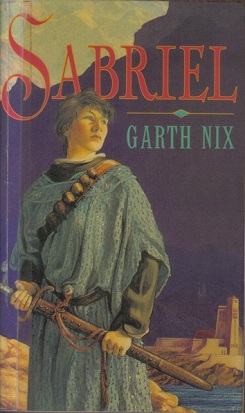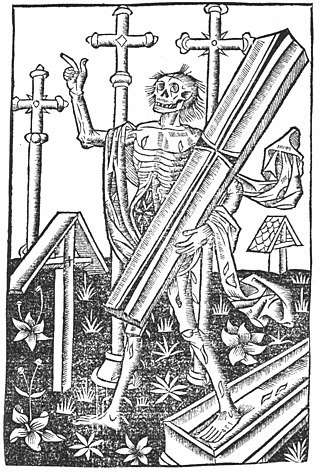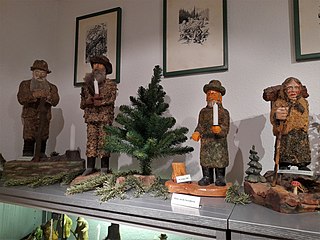Related Research Articles

A vampire is a mythical creature that subsists by feeding on the vital essence of the living. In European folklore, vampires are undead creatures that often visited loved ones and caused mischief or deaths in the neighbourhoods which they inhabited while they were alive. They wore shrouds and were often described as bloated and of ruddy or dark countenance, markedly different from today's gaunt, pale vampire which dates from the early 19th century. Vampiric entities have been recorded in cultures around the world; the term vampire was popularized in Western Europe after reports of an 18th-century mass hysteria of a pre-existing folk belief in Southeastern and Eastern Europe that in some cases resulted in corpses being staked and people being accused of vampirism. Local variants in Southeastern Europe were also known by different names, such as shtriga in Albania, vrykolakas in Greece and strigoi in Romania, cognate to Italian 'Strega', meaning Witch.

A jiāngshī, also known as a Chinese hopping vampire, is a type of reanimated corpse in Chinese legends and folklore. It is typically depicted as a stiff corpse dressed in official garments from the Qing dynasty, and it moves around by hopping with its arms outstretched. It kills living creatures to absorb their qi, or "life force", usually at night, while during the day, it rests in a coffin or hides in dark places such as caves. Jiangshi legends have inspired a genre of jiangshi films and literature in Hong Kong and East Asia. Although the pronunciation of jiangshi varies in different East Asian countries, all of them refer to the Chinese version of vampires.

In fantasy fiction, a lich is a type of undead creature.
Strigoi in Romanian mythology are troubled spirits that are said to have risen from the grave. They are attributed with the abilities to transform into an animal, become invisible, and to gain vitality from the blood of their victims. Bram Stoker's Dracula has become the modern interpretation of the Strigoi through their historic links with vampirism.

Sabriel is a fantasy novel by Garth Nix, first published in 1995. It is the first in his Old Kingdom series, followed by Lirael, Abhorsen, Clariel, Goldenhand, and Terciel and Elinor.

The kallikantzaros is a malevolent creature in Southeast European and Anatolian folklore. Stories about the kallikantzaros or its equivalents can typically be found in Greece, Bulgaria, Turkey, Serbia, Albania, Bosnia, and Cyprus. Kallikantzaroi are believed to dwell underground but come to the surface during the twelve days of Christmas, from 25 December to 6 January.

In folklore, a revenant is an animated corpse that is believed to have been revived from death to haunt the living. The word revenant is derived from the Old French word revenant'returning'.

Prende or Premte is the goddess of dawn, love, beauty, fertility, health and protector of women, in the Albanian pagan mythology. She is also called Afër-dita, an Albanian phrase meaning "near day", "the day is near", or "dawn", in association with the cult of the planet Venus, the morning and evening star. Her sacred day is Friday, named in Albanian after her: e premte, premtja. In Albanian mythology Prende appears as the daughter of Zojz, the Albanian sky and lightning god.
Vrykolakas, also called vorvolakas or vourdoulakas, is a harmful, undead creature in Greek folklore. It shares similarities with numerous other legendary creatures, but is generally equated with the vampire of the folklore of the neighbouring Slavic countries. While the two are very similar, a vrykolakas eats flesh, particularly livers, rather than drinking blood, which combined with other factors such as its appearance bring it more in line with the modern concept of a zombie or ghoul.

The moss people or moss folk, also referred to as the wood people or wood folk or forest folk, are a class of fairy folk, variously compared to dwarfs, elves, or spirits, described in German folklore as having an intimate connection to trees and the forest. In German, the words Schrat and Waldschrat are also used for a moss person. The diminutive Schrätlein also serves as synonym for a nightmare creature.

Pocong is a ghost that looked like person who is wrapped in a funeral cloth. In Islamic funeral, a shroud called a "kain kafan" used to wrap the body of the dead person. The dead body is covered in white fabric tied over the head, under the feet, and on the neck, and the shroud is firmly tied at multiple junctures to maintain its position during the journey to the grave site. Upon placement into the grave, it is believed that the knots must be undone or the corpse will animate and be known as a Pocong. Pocong is also known in Malaysia as Hantu Bungkus.
Mythic humanoids are legendary, folkloric, or mythological creatures that are part human, or that resemble humans through appearance or character. Each culture has different mythical creatures that come from many different origins, and many of these creatures are humanoids. They are often able to talk and in many stories they guide the hero on their journey.

Legends of vampires have existed for millennia; cultures such as the Mesopotamians, Hebrews, ancient Greeks, and Romans had tales of demonic entities and blood-drinking spirits which are considered precursors to modern vampires. Despite the occurrence of vampire-like creatures in these ancient civilizations, the folklore for the entity known today as the vampire originates almost exclusively from early 18th-century Central Europe, particularly Transylvania as verbal traditions of many ethnic groups of the region were recorded and published. In most cases, vampires are revenants of evil beings, suicide victims, or witches, but can also be created by a malevolent spirit possessing a corpse or a living person being bitten by a vampire themselves. Belief in such legends became so rife that in some areas it caused mass hysteria and even public executions of people believed to be vampires.

Death is frequently imagined as a personified force. In some mythologies, a character known as the Grim Reaper causes the victim's death by coming to collect that person's soul. Other beliefs hold that the spectre of death is only a psychopomp, a benevolent figure who serves to gently sever the last ties between the soul and the body, and to guide the deceased to the afterlife, without having any control over when or how the victim dies. Death is most often personified in male form, although in certain cultures death is perceived as female. Death is also portrayed as one of the Four Horsemen of the Apocalypse. Most claims of its appearance occur in states of near-death.

The Cham Albanian dialect, also called Cham Tosk or Arvanitika, is the dialect of the Albanian language spoken by the Cham Albanians, an ethnic Albanian minority in the Epirus region of northwestern Greece and in Konispol, southern Albania.
The Ora is an Albanian mythological figure that every human possesses from birth, associated with human destiny and fate. The essential function of the ora is to maintain the order of the universe and to enforce its laws.

Upiór (Tatar language: Убыр , Turkish: Ubır, Obur, Obır, is a demonic being from Slavic and Turkic folklore, a prototype of the vampire. It is suggested that the ubır belief spread across the Eurasian steppes through the migrations of the Kipchak-Cuman people, after having its origins in the regions surrounding the Volga River and the Pontic steppes. The modern word "vampire" derives from the Old Slavic language and Turkic form онпыр , with the addition of the sound "v" before a large nasal vowel, characteristic of Old Bulgarian, as evidenced by the traditional Bulgarian form впир.
References
- 1 2 3 4 5 Maximilian Lambertz (1973), "Die Mythologie der Albaner", in Hans Wilhelm Haussig (ed.), Wörterbuch der Mythologie, vol. 2, pp. 455–509